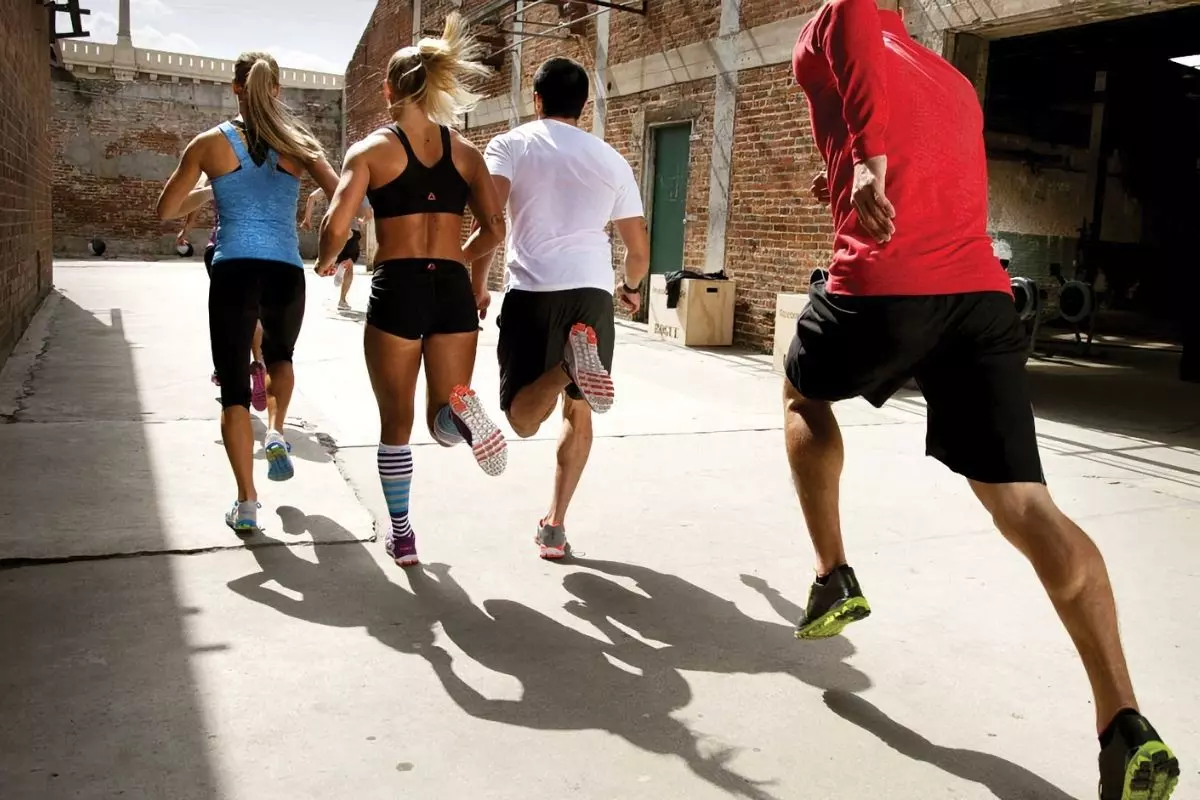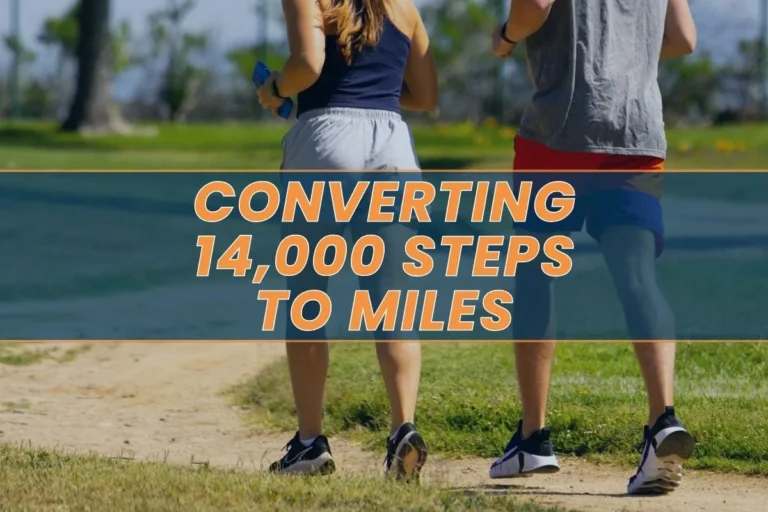How to Achieve 22 Min 5K Pace: Training Tips and Strategies
Reviewed by: Sergii Putsov (PhD in Sport Science)
Are you looking for tips to boost your 22 minute 5K pace? Running this distance is the goal of many runners. To run 5K in 22 minutes, it takes practice and dedication. This blog post provides training strategies and a plan that will help you get to your desired 22-minute finish time. Explore this actionable advice and take your race to the next level.
How to keep a 22-Min 5K pace?
A 22-minute 5K pace requires one to run around a 7-minute per mile, or 4:24 per kilometer. This pace may be too fast for beginners, but it can be achieved with the right training plan, including speed work, hill sprints, intervals, and strength training.
How Far Is 5K to Run?
A 5K race refers to a distance of 5,000 meters or 3.1 miles. It takes runners about 1,000 steps to cover 1 km, so a 5K is around 4,800-5,400 steps, depending on your stride length.
The 5K distance is great for runners of all levels, whether they’re beginners just starting out or more experienced athletes.
Beginner runners can use the goal of completing a 5K as motivation and track their progress towards that target over time.

The 22-Minute 5K Pace and the Average Time for 5K
A 22 minute 5K pace is 4:24 per kilometer or 7:06 per mile. Here is the average time to run a 5K, broken down by different experience levels:
| Level | 5k Time for Males | 5k Time for Females |
|---|---|---|
| Beginner | 24-28 | 26-30 |
| Experienced | 18-22 | 10-24 |
Maintaining a good pace is key to achieving a 22-minute 5K. The faster pace you are able to maintain, the less time it will take you to reach the finish line.
On average, most beginner runners tend to complete their first 5K in 26-28 minutes or more, depending on their fitness level. With proper training, even beginners can gradually increase their speed until they reach the 22-minute mark.
Completing a 5K race in 21 minutes is a very impressive time. This can only be achieved by runners who are committed to hard work, as well as those with an excellent 21-minute 5K training plan.
A 23-min 5K pace is still considered a good result and provides a more realistic goal for recreational runners.
For men in their 20s and 30s, running a 5K at an 8-minute mile pace is considered “good,” while for women of similar ages, a good time is closer to 9 minutes. Generally speaking, younger runners tend to be able to sustain faster paces due to increased energy levels and better conditioning.
How to Run a 5K in 22 Minutes: 3 Tips to Consider
Achieving a sub-22 5K run may seem out of reach for beginners, but with the right training plan and motivation, it’s definitely possible to achieve. A well-structured training schedule should include regular runs mixed in with rest days and cross-training, which will help build endurance while reducing the risk of injury and fatigue.
Here are three tips to help you improve your 5K time:
1. Rest and Recovery
While running sessions are an important part of any training program, taking breaks will help prevent burnout and fatigue, as well as overtraining injuries such as muscle damage and stress fractures.

Pro Tip:
You should add one rest day and one recovery run (easy pace or jog) to your workout routine to avoid putting excess strain on your body, which can lead to overtraining issues.
2. Strength Training and Cross-Training
Strength and cross-training are both important elements of a training program for those aiming to achieve a 22 minute 5K time.
Strength training helps build stronger muscles, allowing runners to become more efficient in their running form while increasing overall endurance.
Cross-training also helps target muscles that usually don’t work during the run. You can try hill cycling, swimming, elliptical, Pilates, or other low-impact activities.

3. Setting Realistic Goals and Tracking Progress
Setting achievable goals can help runners stay motivated as they work towards a faster pace. Regularly monitoring your speed, distance covered, or total amount of time spent running can also provide much-needed data on how far you have come towards achieving your goal.

Pro Tip:
A smart watch or other fitness tracker can be beneficial for measuring progress. They provide accurate records of running performance so you can make necessary adjustments to training plans with accuracy and precision.
Training Plan for 5K in 22 Minutes
Start your journey towards achieving a sub-22-minute 5K run with this 4-week training plan:
| Weeks | Monday | Tuesday | Wednesday | Thursday | Friday | Saturday | Sunday |
|---|---|---|---|---|---|---|---|
| Week 1 | Rest day | 3×1 mile at 7 min/mile pace with 2 min of jogging in between | Strength training | Recovery run, easy pace 40 min | Cross-training | Hill sprints | Long run, 4 miles |
| Week 2 | Rest day | Interval runs 4x600m | Strength training | Recovery run, easy pace 45 min | Cross-training | 3×1 mile at 7 min/mile pace with 2 min of jogging in between | Long run, 5 miles |
| Week 3 | Rest day | 4×1 mile at 7 min/mile pace with 2 min of jogging in between | Strength training | Recovery run, easy pace 50 min | Cross-training | Hill sprints | Long run, 5 miles |
| Week 4 | Rest day | Interval runs 4x800m | Strength training | Recovery run, easy pace 55 min | Cross-training | 4×1 mile at 7 min/mile pace with 2 min of jogging in between | Long run, 6 miles |
Subscribe to Our Running Newsletter!
Get free running tips from renowned professional athletes and discounts from top-notch brands.
To complete weekly workouts successfully and achieve the best results consider the following tips and recommendations per each week.
Week 1
The first week of the 5K plan is all about building a foundation of speed and distance. This includes introducing 1-mile runs at 7 min/mile speed, short hill sprint sessions for improving speed, and starting off with a 4-mile long run.
Week 2
During the second week, you should focus on incorporating speed intervals and add one mile to your long run to build up your endurance, speed, and strength.
Week 3
The third week adds a mile to the 7 min/mile running session and increases your long run to 5 miles. Focus on hill sprints to work on improving your performance, as well as one longer tempo run to build up endurance.

Week 4
The final week includes three runs that incorporate speed intervals to improve your performance, as well as one longer run to build up endurance. It also has an easy-pace run for optimal recovery.

Pro Tip:
All weeks include one rest day, as well as strength training and cross-training. You need to build up core and leg muscles, as this can help you improve your speed while running the 5K distance. If you rearrange the days in this plan, be sure to avoid speed work, hill reps, or long runs on the day after strength training. Give your muscles some time to recover with an easy-pace run.
Frequently Asked Questions About 22-Minute 5K
How Many Calories Are Burned When Running 5K?
On average, a 5K run burns between 300 and 400 calories, depending on your weight, pace, and effort. A 150-pound person running at 10 minutes per mile will typically burn around 360 calories during a 5K race.
Is a 22 Minute 5K Good?
A 22-minute 5K is considered a good time for most runners, although results will vary based on age, sex and fitness level. The average 5K time can range from 18 minutes to over 40 minutes, depending on these factors.
How to Train For 5K in 2 Weeks?
Running a 5K in two weeks might seem intimidating, but it’s possible with proper training and commitment. Don’t forget to add a rest day to ensure your body has enough time to recover and reach peak performance level by race day.
Final Thoughts on a 22-Minute 5K
Completing a 5K in 22 minutes can be a great accomplishment. With the proper training plan, it is possible to run a sub 22 5K, even if you start with no running experience.
By taking into account your skill level and understanding what type and intensity of workout to perform, you can hit your targets. Rest days, strength training, cross-training sessions, intervals, and hill reps are all necessary components of any good training plan for those who wish to achieve this goal.
A well-put-together plan should combine these elements with gradual increases in speed and intensity over several weeks. Adjust the plan as needed and you will soon reach success!
What is your current 5K time? Please share your experience in the comments below.
Also read:
- Energy Beans for Runners
- 8-Week 10K Training Plan Beginner
- Running With Knee Bursitis
- Aerobic Running
- How Long Is a 2 Mile Run
- Creatine for Runners
- Why Do My Legs Feel Heavy When Running
- How to Run Slow
- Is An 8 Minute Mile Good
References:
- The Sleep and Recovery Practices of Athletes // MDPI: https://www.mdpi.com/2072-6643/13/4/1330
- Effects of Strength Training on Running Economy in Highly Trained Runners: A Systematic Review With Meta-Analysis of Controlled Trials // The Journal of Strength & Conditioning Research: https://journals.lww.com/nsca-jscr/Fulltext/2016/08000/Effects_of_Strength_Training_on_Running_Economy_in.36.aspx
- Effects of specific versus cross-training on running performance // ResearchGate: https://www.researchgate.net/publication/15550305_Effects_of_specific_versus_cross-training_on_running_performance
- Pilates training improves 5-km run performance by changing metabolic cost and muscle activity in trained runners // PLOS ONE: https://journals.plos.org/plosone/article?id=10.1371/journal.pone.0194057
- The effects of training with high‐speed interval running on muscle performance are modulated by slope // PMC: https://www.ncbi.nlm.nih.gov/pmc/articles/PMC7785049/
If you have any questions or suggestions, you can contact us via email – [email protected]






